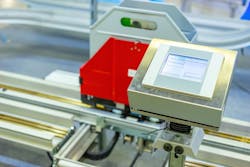The Evolution of HMI
Historically, the HMI has evolved from simple push buttons and lights to sophisticated devices combining the HMI and PLC into a single package. The increased sophistication, such as the ability to incorporate high-resolution graphics and complex control functionalities, allows for real-time monitoring and troubleshooting.
Engineers can now use HMIs to display detailed visualizations of processes, reducing the need for physical interventions in control panels, Control Design reported. This advancement aids in minimizing downtime and optimizing operator efficiency.
Another critical area for automation engineers is the protection of HMIs in harsh industrial environments. Since HMIs are essentially computers with touchscreens, they are more fragile compared to mechanical controls.
Manufacturers offer solutions like IP-rated enclosures, rubber boots for buttons and even air-purged enclosures to safeguard against contaminants and physical damage. Learn more about the evolution of HMIs from Control Design.

